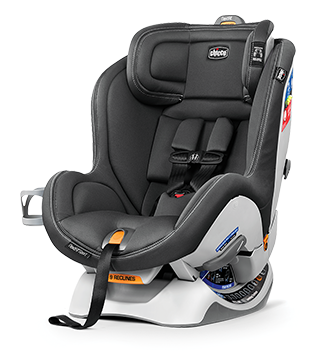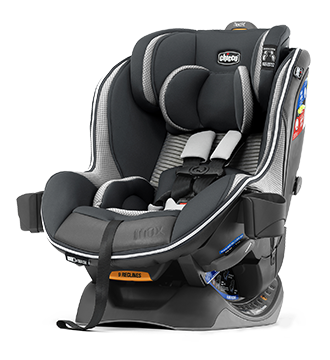What is a convertible car seat?
HOW TO CHOOSE A CONVERTIBLE CAR SEAT
A convertible car seat refers to a seat with two distinct modes of use—rear-facing for newborns and toddlers to forward-facing when child height or weight requirements are met. Multiple recline and headrest settings in both modes keep your baby comfortable and secure. You’ll know when it’s time to graduate from the convertible car seat when your child is 65 lbs. or 49 inches.
Chicco Convertible Car Seats
Convertible Car Seat Checklist
Convertible Car Seats - Frequently Asked Questions
You will need a convertible car seat once your child’s height or weight surpass the guidelines for safe use of an infant car seat. It is recommended to keep your child in a rear-facing seat for as long as possible.
Keep your child rear-facing in their convertible car seat until they have reached either the rear-facing height limit or the rear-facing weight limit of the car seat. Are your kid’s feet touching the seat back? Do they look a little cramped? That’s okay. Children are a lot more flexible than adults. The benefit of keeping your child rear-facing for as long as possible is protection of their developing head, neck and spine. Kids do not need to be turned forward-facing until they reach the maximum rear-facing height or weight limit of the car seat. Kids are fragile, and they are best protected rear-facing, even if that means they have a little less leg room. See the recommendation from NHTSA.gov
Even when your child fits the height and weight guidelines to use a seat belt instead of a full harness with their booster seat, that doesn’t mean they should. Maturity matters - most children younger than 5-years old are not mature enough to sit without a full harness. You know your child best, so don’t make the switch until you’re confident your growing child will sit still and safely without a full harness.
Some retailers might allow you test the fit of a car seat before purchasing but most have displays that allow you to check out the car seat in-store to research the features that make installation simple like bubble level indicators and multiple recline angles.
In most instances, the middle rear seat is the safest place for your car seat. However, there are multiple factors to consider; the most important being a seat location that allows you to install your car seat correctly and works best for your family. See the recommendation from NHTSA.gov.
Chicco convertible car seats have an 8 year life span.
Yes, you must replace your car seat and base if it has been involved in a vehicle crash, even if you can’t see visible damage. A damaged car seat or base may not protect your child in a future accident.
Chicco convertible car seats are easy to install simply, accurately and securely every time. Choose from various performance fabrics including a zip & wash seat pad, ClearTex® no added chemicals and 3D AirMesh for increased ventilation. The extended-use "Max" convertible car seat option offers 25% more legroom* in rear-facing mode and more calf-support in forward-facing mode. Shop our full line of convertible car seats to find the perfect fit for your family.
*Compared to other Chicco NextFit car seats



